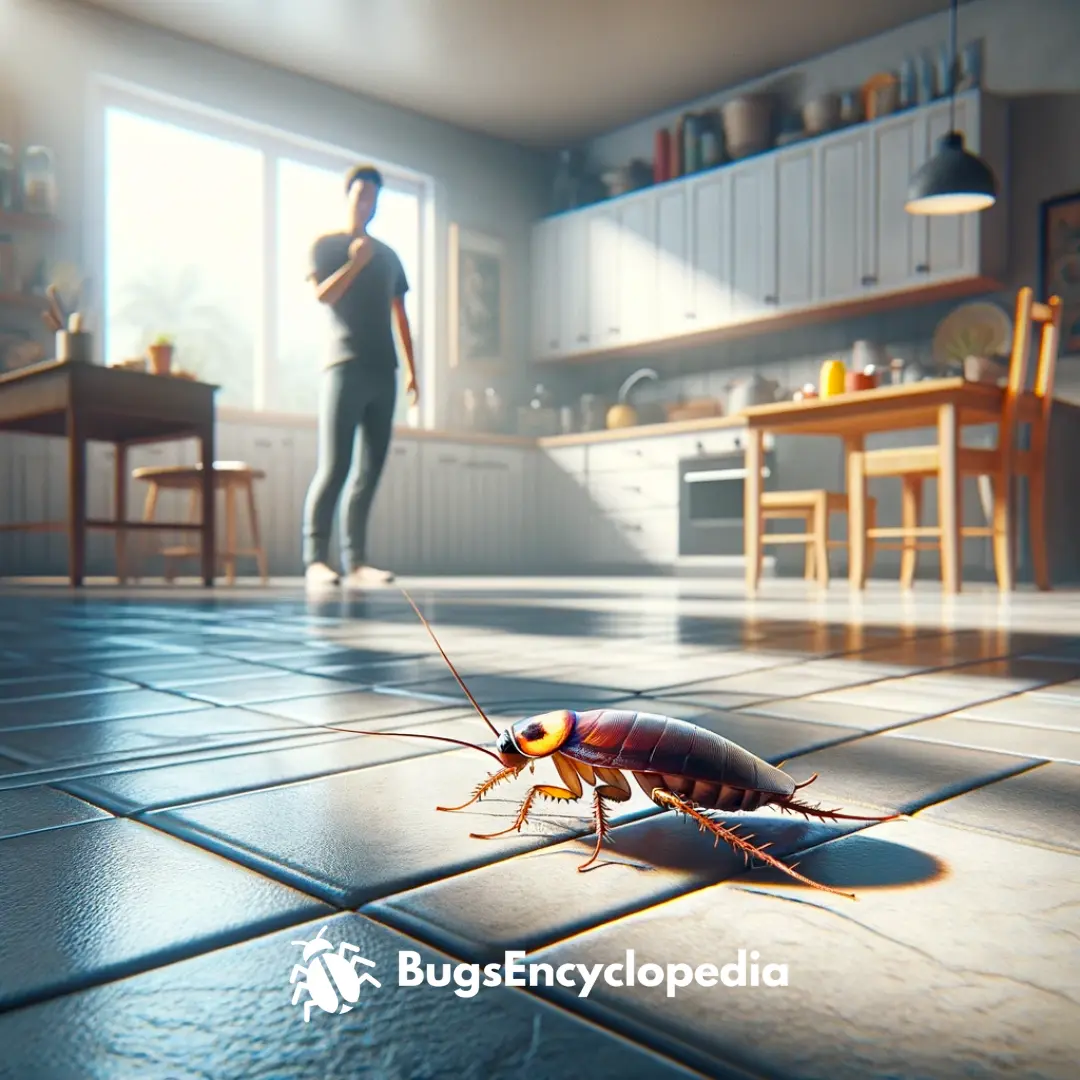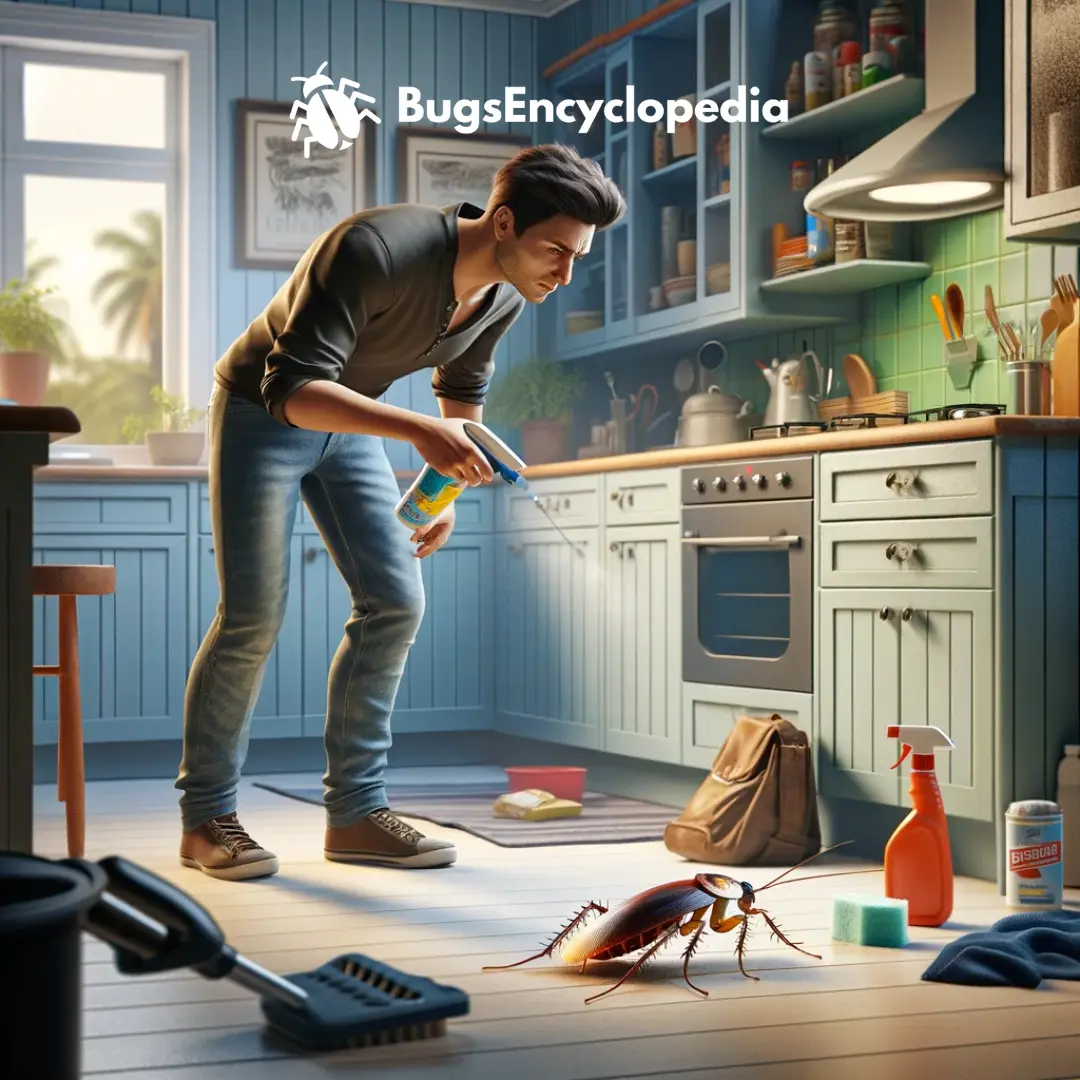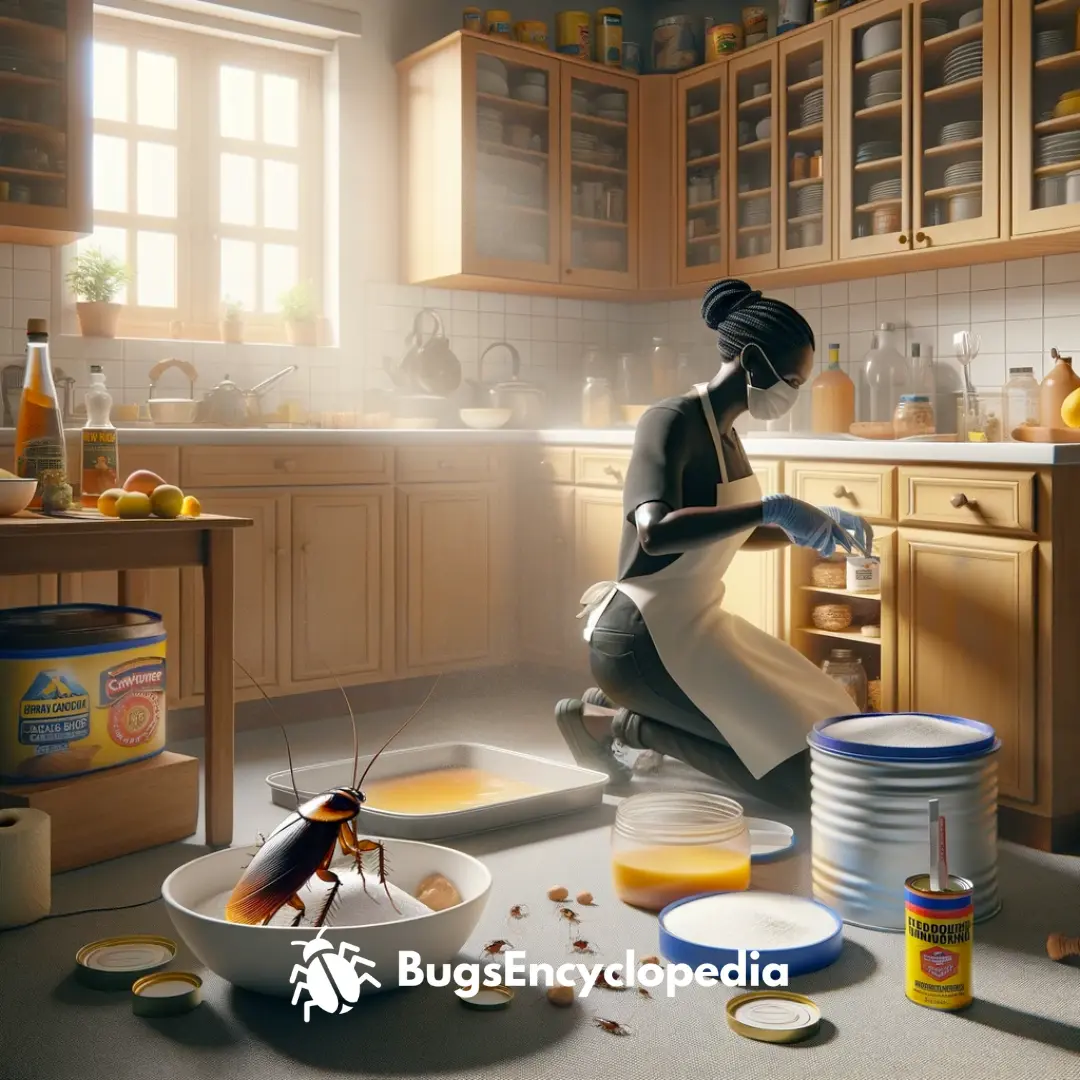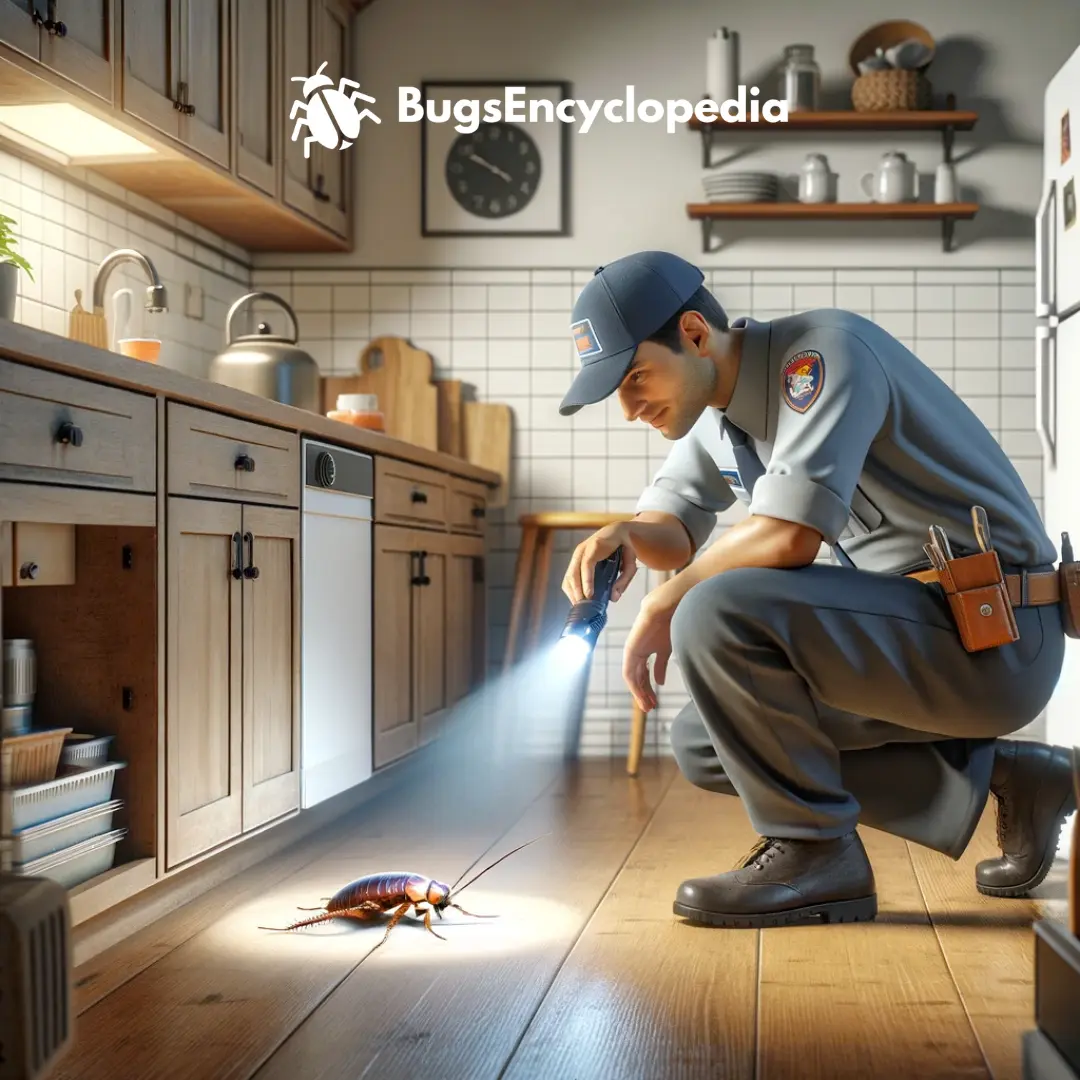The sight of a lone cockroach scuttling across your floor can send shivers down your spine and flood your mind with worry. Is it an isolated incident, or the tip of an iceberg lurking in the shadows of your home?
These resilient pests have earned their reputation not just for their hardiness but for the potential health risks they carry and the rapidity with which they can take over quiet corners of our spaces.
This concern becomes even more pronounced when considering that seeing one may mean there are many more hidden away.
In this article, we’ll guide you through understanding when to raise the alarm over a single sighting, distinguishing between a harmless encounter and signs of a larger infestation, and deciding on effective action plans.
Basics Of Cockroaches (Their Nature)
Spotting a single cockroach in your home can indeed raise alarm. Before jumping to conclusions, it’s critical to grasp the nature of these pests and what their presence might indicate.
Cockroaches are known for their resilience and adaptability, thriving in various environments but particularly favoring warm, moist areas close to food sources. These nocturnal creatures prefer to remain hidden during the day, making them hard to detect.
Cockroaches are not solitary insects; where there is one, there often are more lurking out of sight. Their ability to reproduce quickly means that even a small infestation can escalate rapidly if not addressed promptly. Moreover, they can carry pathogens that may lead to health issues such as allergies and asthma.
Key traits of cockroaches include their rapid breeding cycle and survival instincts that make them formidable pests once they establish a foothold in an environment conducive to their growth.
Therefore, noticing even a single cockroach should prompt homeowners or residents to investigate further for potential signs of infestation – droppings resembling coffee grains or pepper dots across countertops or floors being notable indicators.
Why Seeing One Might Be Concerning
The sight of just one cockroach often hints at an underlying issue far greater than it appears. Cockroaches are adept at concealment, choosing to roam when it’s dark and quiet—primarily at night.
If you see one during the day, it may indicate that their hiding spots are overcrowded due to overpopulation or they’re scavenging for food and water due to scarcity in their environment. This scenario suggests a potential infestation not far behind.
Moreover, cockroaches are voracious breeders. A single female cockroach can produce hundreds to thousands of offspring in her lifetime. Given this rapid reproductive rate, seeing one could very well mean there are many more hidden away.
Their ability to spread diseases by contaminating food surfaces and utensils further compounds the concern, making vigilance essential after spotting your first roach.
Assessing The Situation
Upon encountering a cockroach, it’s crucial to evaluate what it signifies about your living environment. This step is essential in formulating an effective response.

Spotting A Single Cockroach (When to Worry)
The appearance of a lone cockroach can serve as the proverbial canary in the coal mine for homeowners. While these insects are known for their secretive nature, emerging primarily at night to feed, daytime sightings could signal overpopulation within their hidden colonies forcing some out into the open.
Another red flag is spotting them in areas typically devoid of food and water sources—such as bedrooms or living rooms—as this might suggest they are exploring further due to scarce resources elsewhere.
Moreover, consider the type of cockroach you’ve encountered. Certain species, like the German cockroach, are more likely to infest human habitats and reproduce indoors.
If your unwelcome guest belongs to one of these categories, its presence—even if solitary—could predict a larger unseen population dwelling within your premises.
Identifying Signs Of An Infestation
A key indicator of an infestation goes beyond just seeing the pests themselves. Cockroach droppings are tell-tale signs; these resemble black pepper or coffee grounds and may be found in areas where food is stored, such as kitchens and pantries.
Additionally, keep an eye out for egg casings (oothecae), which carry multiple embryos and can be discovered in secluded spots around your home.
Another significant marker is an unpleasant odor that becomes more noticeable with a growing infestation. This musty scent originates from pheromones released by cockroaches and can permeate through your living space as their numbers increase.
Lastly, check for shed skins—cockroaches molt several times during their lifecycle, leaving behind exoskeletons that can signal an ongoing presence.
Spotting these signs warrants immediate action to halt the spread and prevent potential health risks associated with cockroach infestations.
Distinguishing Between A Singular Incident And An Infestation

To discern this, begin by considering the time and place of the sighting. Encountering a cockroach during daylight hours can be unusual since these pests are nocturnal. Such sightings may suggest that their usual hiding places are overcrowded – a strong hint towards infestation.
Additionally, spotting them in areas far removed from food sources or water points, like bedrooms or living rooms, indicates they’re venturing further to support an expanding population.
Frequency plays a crucial role as well; while seeing one cockroach might not immediately signal trouble, regular occurrences should raise red flags.
It’s also valuable to monitor for other signs such as droppings, egg casings (oothecae), and unpleasant odors that collectively point toward an established colony rather than a lone wanderer.
Moreover, environmental factors contribute significantly to potential infestations. Cockroaches thrive in warm conditions where food and moisture are readily available.
Assessing your home for such conducive conditions—leaky pipes, unsealed food containers, and cluttered spaces—can help determine if you’re dealing with more than just an incidental visitor.
Immediate Actions Post-Sighting

Initially, thoroughly clean the area where the cockroach was discovered. This includes wiping down surfaces to remove crumbs and spills, vacuuming carpets, and disposing of garbage regularly. Such measures minimize the attractants for these pests.
Next, conduct a detailed inspection around your home for any entry points that could permit access to these unwelcome guests. Seal cracks in walls, fix leaky pipes and ensure windows have tight-fitting screens. Cockroaches can flatten themselves to enter through minute spaces, so no gap should be overlooked.
Another vital step is to reduce moisture levels in your home since cockroaches are drawn to water sources as much as food. Use dehumidifiers in damp areas like basements or bathrooms and repair leaks promptly.
For added protection, deploy traps or baits strategically around potential hotspots such as kitchen cabinets, appliances’ backsides, and under sinks—places where cockroaches frequently traverse or hide. Monitoring these can provide insights into whether you’re dealing with an isolated incident or facing a larger issue requiring professional intervention.
Implementing these actions swiftly not only addresses the immediate concern but also fortifies your home against future invasions,** ensuring peace of mind** in maintaining a pest-free environment.
Long-Term Prevention Strategies
To secure your living space against cockroach invasions over the long term, it’s essential to adopt a multifaceted approach that addresses both immediate concerns and potential vulnerabilities.

First and foremost, maintain a clean and clutter-free home. Regularly dispose of trash, avoid leaving dishes in the sink overnight, and store food in sealed containers. Reducing clutter eliminates hiding spots for cockroaches, making your home less inviting to them.
Another critical measure is sealing entry points, an often overlooked yet effective deterrent against pests. Inspect your home’s exterior for cracks or holes where cockroaches could gain entry and seal them with caulk or steel wool. Pay special attention to areas around pipes, windows, and doors.
Improving ventilation can also discourage cockroach activity by reducing moisture levels within your home. Ensure that bathrooms are well-ventilated and fix any leaky faucets or pipes promptly to eliminate water sources that could attract these pests.
Consider integrating natural repellents, such as bay leaves or diatomaceous earth, into your preventive measures. These substances can deter cockroaches without introducing harmful chemicals into your environment.
Finally, professional pest control services offer comprehensive solutions tailored to specific infestations’ scope and nature. Scheduling regular inspections can help identify potential problems early on before they escalate into full-blown infestations.
By implementing these strategies consistently, you’ll create a hostile environment for cockroaches, significantly reducing the likelihood of their presence in your home over time.
Professional Evaluation Vs DIY Solution

When confronting the issue of a cockroach sighting, homeowners often grapple with whether to seek professional help or tackle the problem through DIY methods. Understanding the pros and cons of each approach is key to making an informed decision.
Opting for professional pest control services offers several advantages. Experts possess comprehensive knowledge about different types of cockroaches, their habits, and effective treatment plans tailored to specific infestations.
They have access to commercial-grade insecticides that are more potent than over-the-counter solutions and can safely apply these treatments while minimizing risk to your family and pets.
On the other hand, DIY methods can be appealing due to their immediate availability and lower upfront costs. Homeowners may use traps, baits, or household pesticides as part of their initial response.
These efforts can be effective for minor issues but may not address deeper infestation roots hidden within walls or under floors.
However, it’s crucial to recognize when a situation exceeds DIY capabilities—a single cockroach might hint at a larger unseen problem requiring professional diagnostics tools and expertise beyond what most homeowners have at their disposal.
In Closing
The fleeting glimpse of a cockroach in your home can indeed spark concern, urging a closer examination of our living environments and the invisible thresholds we share with these ancient survivors.
This article has armed you with knowledge on when such sightings should prompt worry, how to discern signs of infestation, and proactive steps towards ensuring your space remains inhospitable to unwanted guests.
Remember, the aim is not just eradication but understanding and cohabitation within our ecosystems. Armed with this insight, you stand prepared to tackle potential invasions while fostering an awareness that extends beyond mere pest control—towards creating resilient habitats within our homes.

I’m Shawn Gleason, a seasoned Entomologist with a Ph.D. from the University of Florida and the founder of Bugs Encyclopedia. With over 10 years of experience in Integrated Pest Management, I’m a certified Pesticide Applicator and a recognized authority in entomology. I’ve contributed to numerous prestigious journals, and I use Bugs Encyclopedia to share my deep knowledge, creating an accessible, trusted resource for bug enthusiasts and the general public. My mission is to demystify the complex world of bugs, ensuring that accurate, comprehensive information is accessible to all.
